QNAP TDS-16489U Small and Midsize Business NAS Review
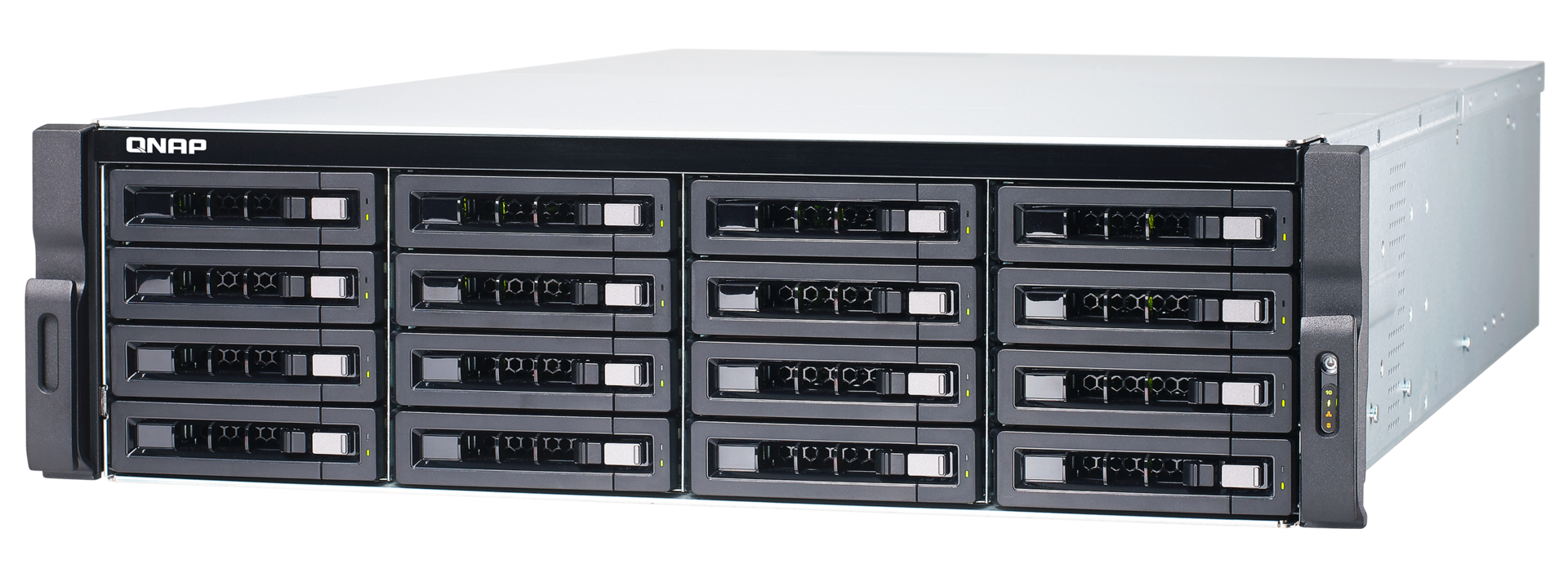
The Russian representative office of QNAP provided me with a review of my NAS system TDS-16489U-SB3, which is positioned as solutions for small and medium businesses. Today I will talk about it, their applicability in a small company, and also talk about QTS operating systems.
The TDS-16489U contains only one controller, allows you to install both SAS and SATA drives, and SSD, and is controlled by the classic QTS, which you could meet in your home NAS from QNAP. In this case, the hardware allows you to achieve high performance, and the QTS operating system allows you to use it not only for data storage.
Specifications:
- Form factor: Stream (3U)
- Processor: 2 x Intel Xeon E5-2600 v3 (6 or 8 nuclear configuration)
- Memory: 256Gb (DDR4), can be expanded up to 1Tb (16 slots)
- Flash memory: 512Mb
- Disks:
- 16 x 3.5 "SAS, SATA or 2.5" SAS / SATA SSD
- 4 x 2.5 "SAS / SATA SSD
- 2 x mSATA
- Maximum storage capacity: 160TB
- Maximum solution capacity (using expansion shelves): 1440TB
- Network interfaces:
- 4 x SFP + 10GbE ports
- 2 x RJ-45 1GbE ports
- Expansion slots / ports:
- 4 x PCle: 3 PCIe Gen3 x8 slots, 1 PCIe Gen3 x16 slot
- 4 x USB 3.0
- 1 x VGA
- Power supply: 2 x 650 W
- Power usage:
- Sleep mode: 255 W
- In operation: 363 W
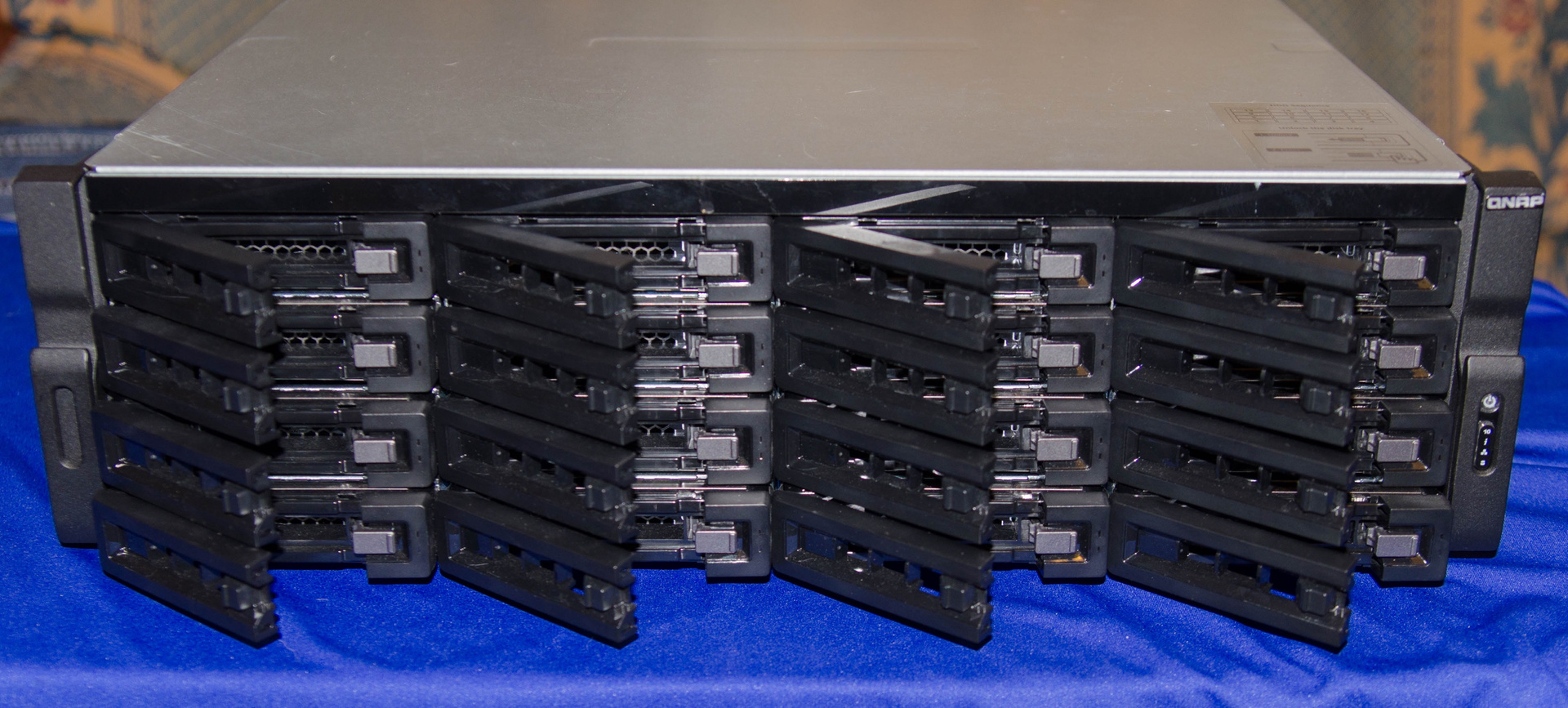
16 bays for 3.5 "SAS / SATA. Screwless mounting discs missing here
Looking at the technical specifications, we can say that the system is extremely versatile and can be integrated into any existing network. Unfortunately, there are no FC cards in the compatibility list , so only the LAN will have to be limited. But the system can be expanded with the help of 40 / 56GbE network adapters that are installed in PCIe slots. Also, these slots can be used to install a PCIe SSD, which can be used as a cache (although only Intel DC P3700 appears in the compatibility list ). With Qtier technology, you can organize multi-level data storage.
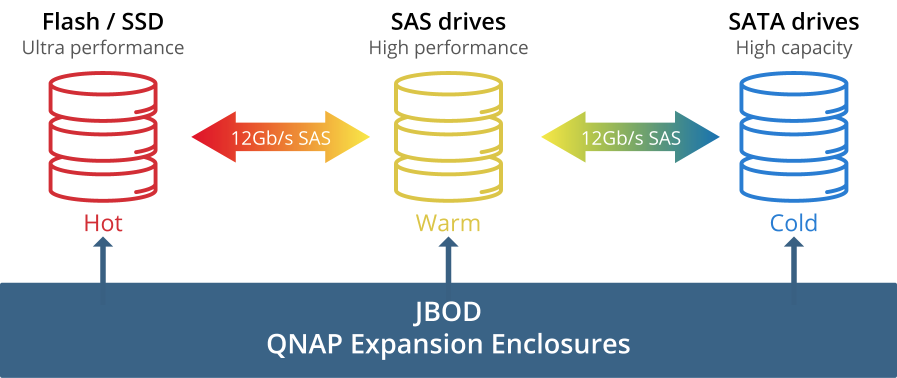
')
You should not also forget that QTS is based on Linux, so it can manage not only disk resources, but also support third-party software and hardware. Thanks to this, the system can be expanded with webcams for video surveillance, sound cards, 3 / 4G modems, etc. The installed Intel Xeon E5-2600 v3 processors will be enough to solve a huge range of tasks.
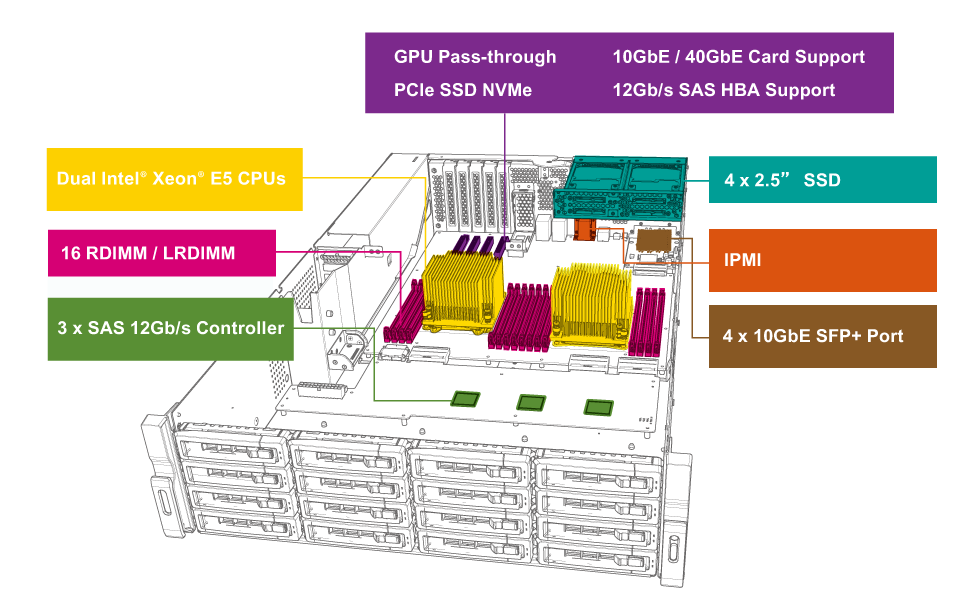
The TDS-16489U is equipped with three LSI SAS controllers.
But do not be afraid that the system is based on Linux, if you are not a trained user. The system is no different from those that are installed on the company's home models, so setting up something comes down to pressing a few buttons and entering several parameters, which should not cause any problems.
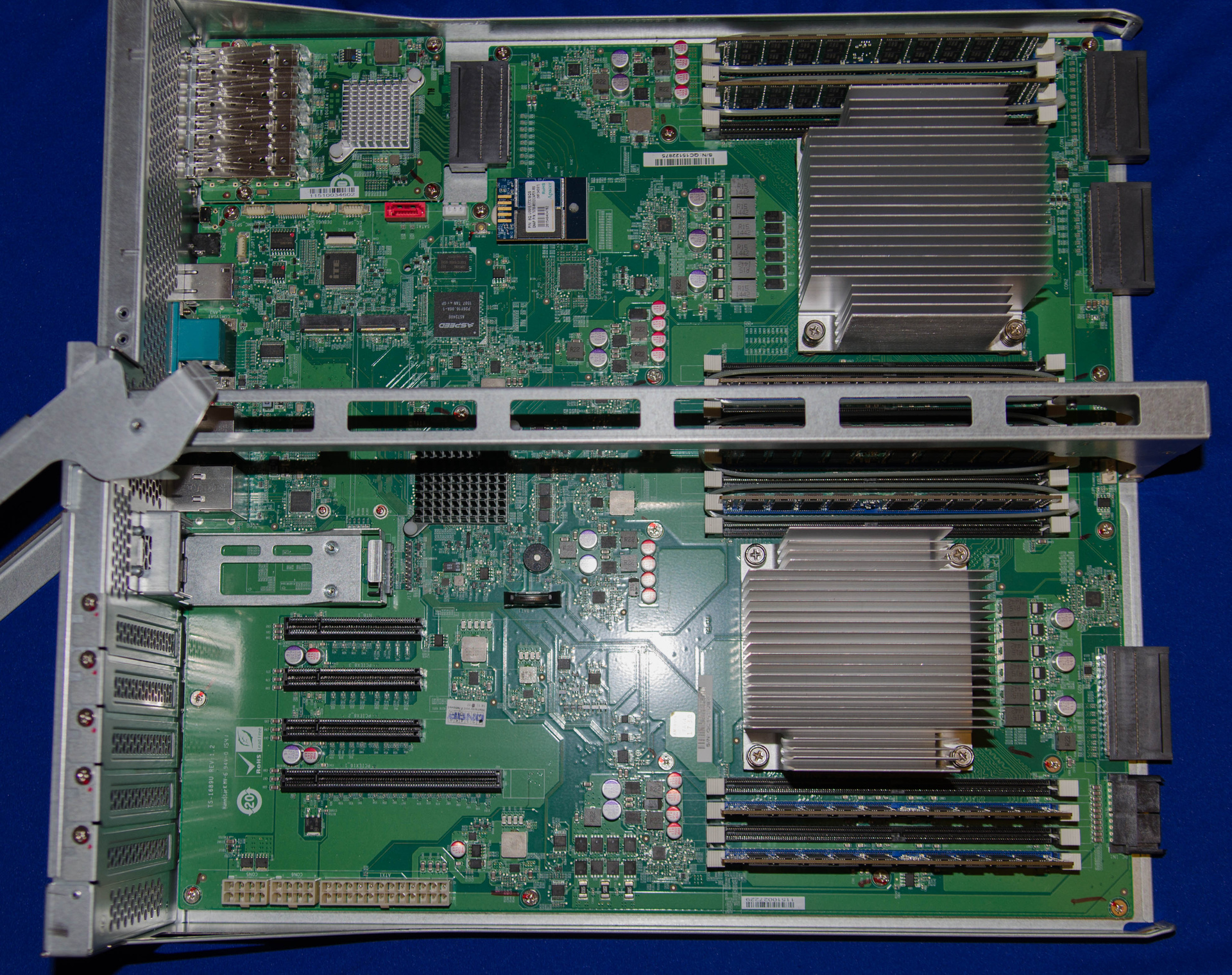
The controller itself is conveniently removed from the back, along with the connected wires, you do not have to rewire it when installing expansion cards
As for the software - the choice here is much wider. In addition to standard repositories with software that will allow you to make not only universal storage with block, file, and object access from a device, many companies release their products under QNAP (for example, backup software - Nakivo Backup & Replication ). But do not forget that the system uses high-performance processors and a large amount of RAM, and this allows us to load the system with something more useful. For all the testing time, I did not see that the processor load exceeded 3% when I used the NAS as a storage system, so the additional virtualization and containerization software (Docker / LXC) looks very interesting.
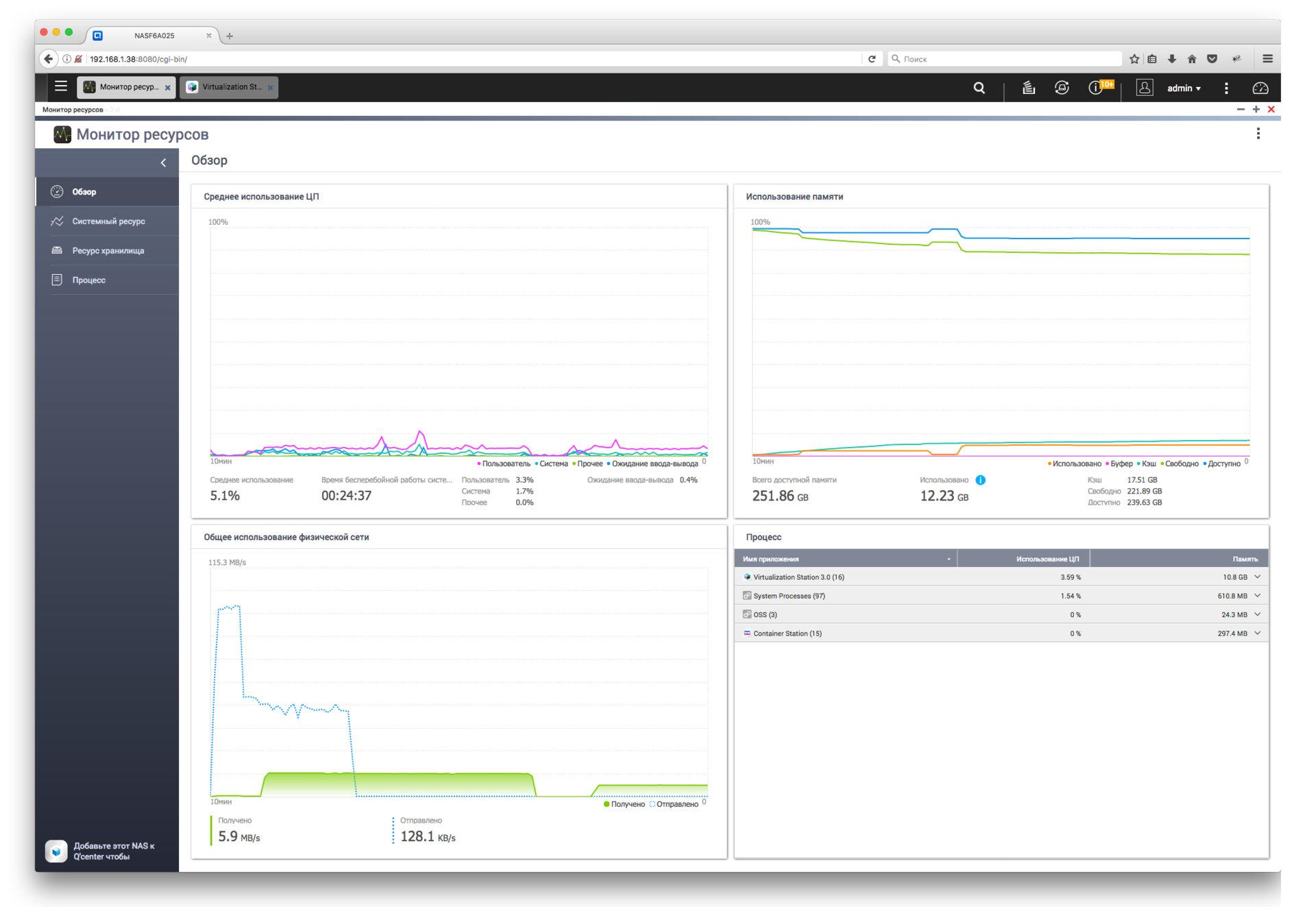
System performance monitoring

Launched Container in ContainerStation

Virtual Machine List in VirtualizationStation3
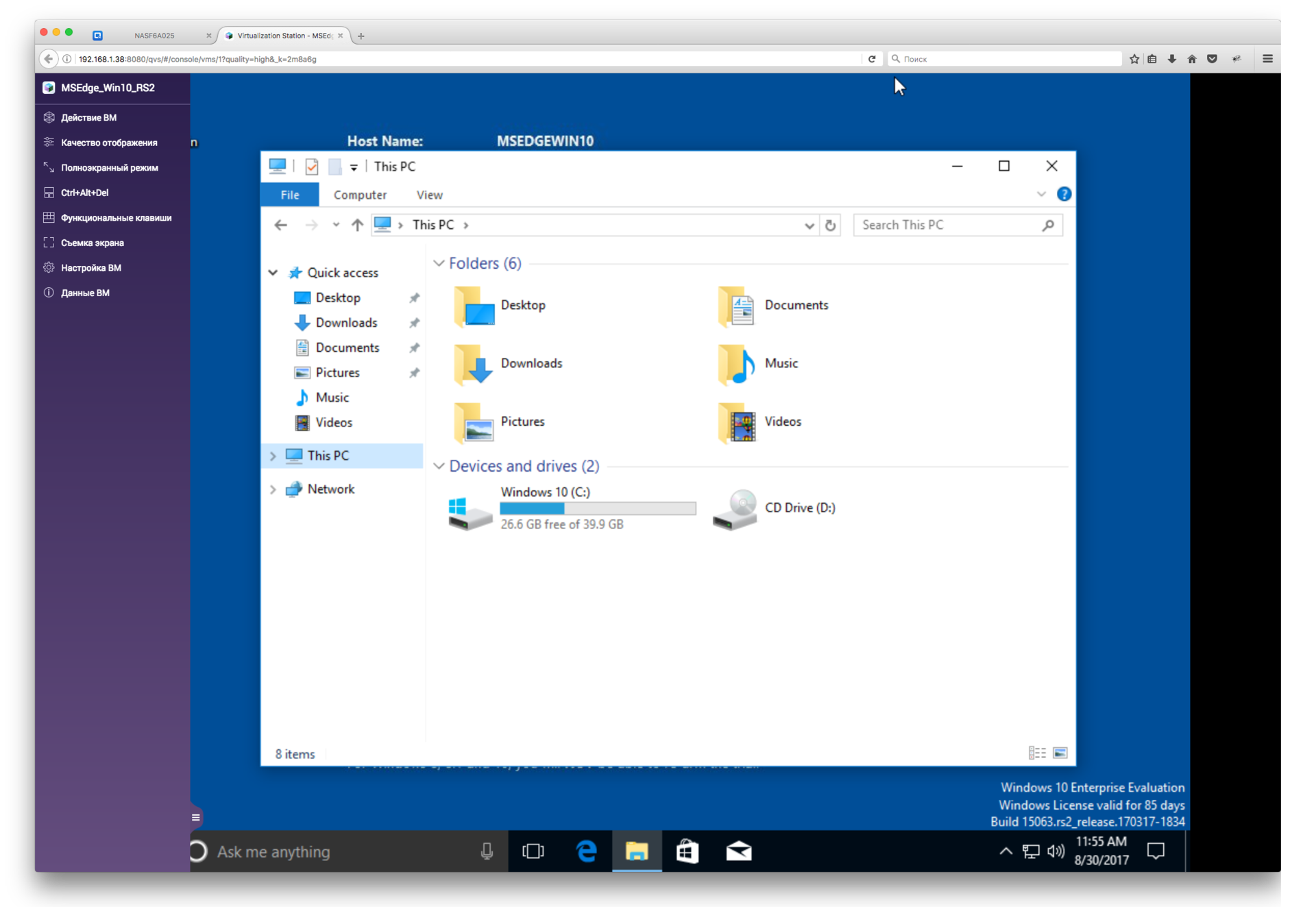
Running Windows 10. Does not require Java
This model is positioned as a “double server”: a storage server and a virtualization server in one box. Someone is on the path of separation of these entities, but someone is vice versa. Typically, these budget solutions are based on low-end server models that allow you to install a large number of disks. The QNAP company, on the other hand, went from the reverse, proposing exactly the disk array, with the ability to run virtual machines / containers. And this is not surprising, because every year the performance of processors increases more and more, while their price falls, but not all data storage tasks are able to utilize these resources. Therefore, it is logical to use them for any other tasks and virtualization is just one of these tasks. Of course, given only one controller in this system, the issue of fault tolerance remains open, but nevertheless, it could well be used as a backup or test environment in order to utilize the available computing resources.
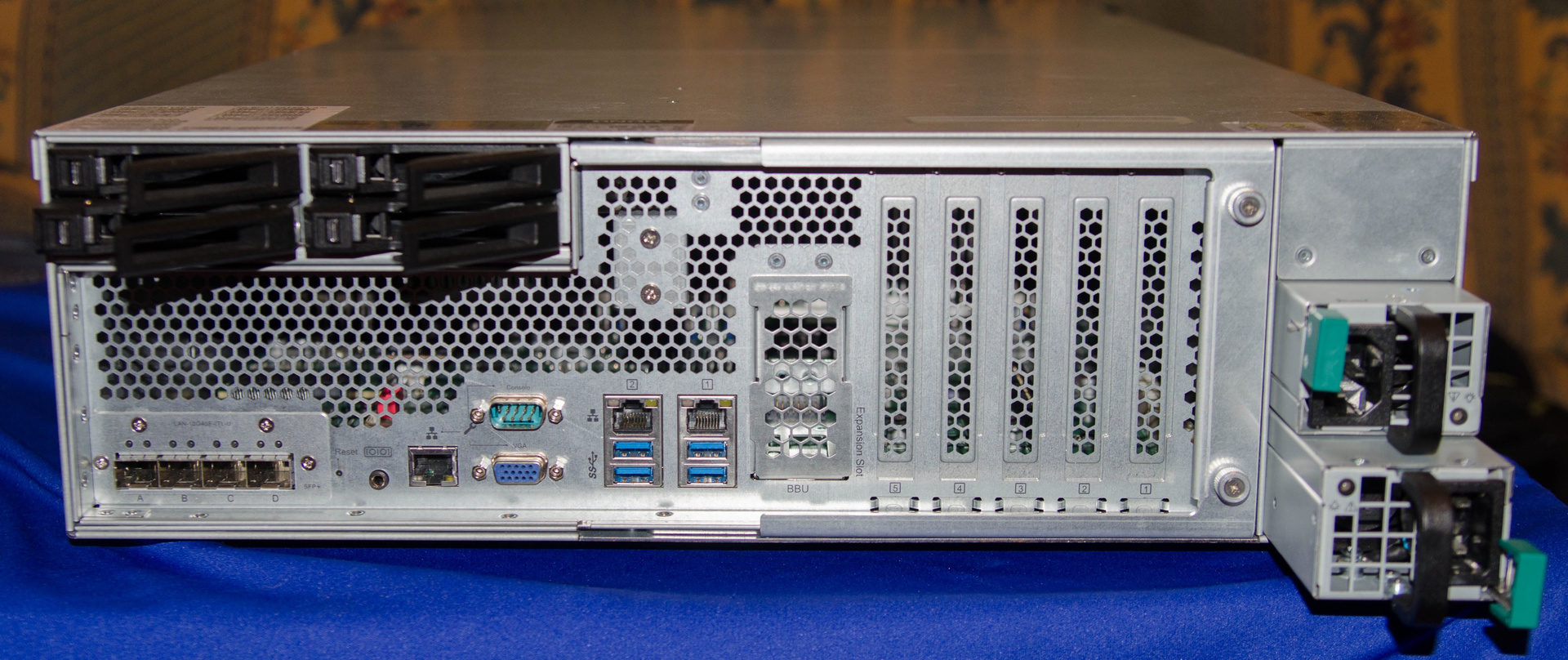
4 bays 2.5 "SSD, 4 ports SFP +, IPMI, 4 USB 3.0 and 2 ports 1Gb / s, two power supplies
Fault tolerance is designed to provide a backup system, synchronization with which can be organized on the system. Double-Take Availability enables high availability and data recovery.
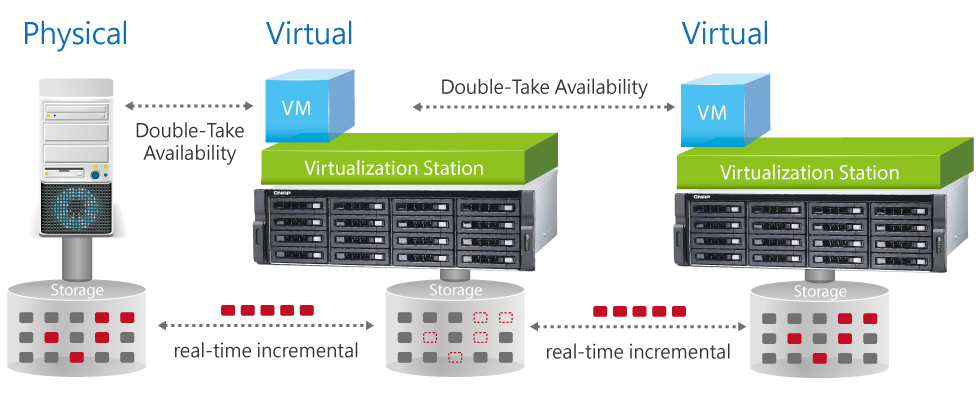
Built-in backup and replication tools, including cloud services (Amazon S3, Dropbox, Google Drive, etc.), allow you to perform a full range of data protection and recovery based on one solution.
NAS is great for small and medium businesses: 16 bays are available for 3.5 "hard drives, as well as four bays for 2.5" SSD, which allows you to organize a storage of impressive capacity and performance. The presence of two high-performance processors and a decent amount of RAM allow you to solve a wide range of tasks using a single device.The ability to integrate the device into both 1G and 10Gb / s networks makes the device extremely versatile and can be used in offices and “for growth”. The QNAP QTS operating system allows It’s easy to set up the device and add functionality by pressing a couple of keys, making configuration and maintenance extremely easy. The built-in backup capabilities increase the reliability of data storage. a system that has come to corporate devices from a home product line, but QNAP also has a two-controller solution based on the QES operating system, and I was promised in the near future to provide such a system - ES1640dc v2. So, as you can now say - subscribe and wait for the continuation. I will definitely make a detailed review of this solution and compare the QTS and QES operating systems.
Source: https://habr.com/ru/post/338652/
All Articles